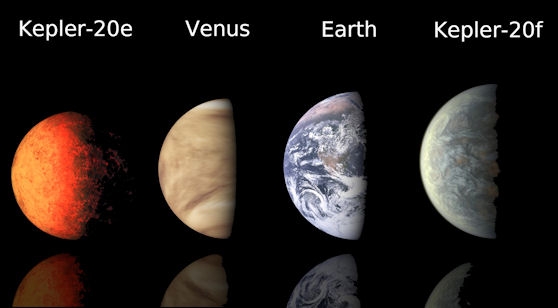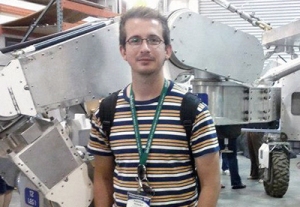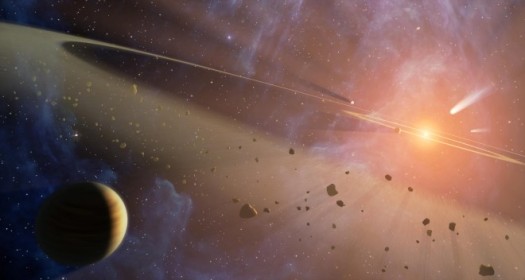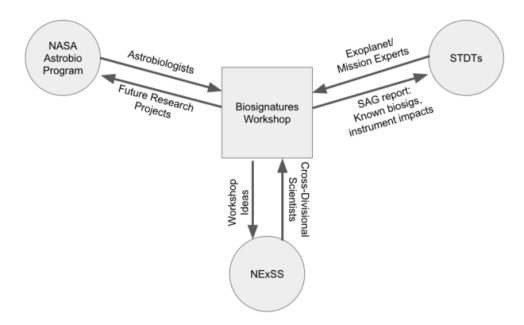This “Many Worlds” post is written by Andrew Rushby, a postdoctoral fellow from the United Kingdom who recently began working with NASA’s NExSS initiative. The column will hopefully serve to both introduce this new NExSS colleague and to let him share his thoughts about the initiative and what lies ahead.

I’m most excited to join NExSS at its one year anniversary, and hope that I can help the network as it advances into, and works to fashion, the exoplanetary future.
Coming in from the outside, the progress I already see in terms of bringing researchers together to work on interdisciplinary exoplanet science is impressive. But more generally, I see this as a significant juncture in the fast-expanding study of these distant worlds, with NExSS and its members poised to facilitate a potentially revolution in how we look at planets in this solar system and beyond.
The ‘systems science’ approach to understanding exoplanets is, I believe, the right framework for advancing our understanding. Earth scientists and biogeochemists have been using systems science for some time now to build, test, and improve theories for how the Earth functions as an interconnected system of physical, chemical and biological components — all operating over eons in a complex and tangled evolutionary web that we are only now unraveling.
It is this method that allows us to better understand the respective roles of the atmosphere, ocean, biosphere, and geosphere in influencing the past and present climate of this planet. It allows us to clearly see the damage we are causing to these systems through the release of industry and transport-created greenhouse gases, and offers opportunities for mitigation. We know the systems science approach works for the Earth, and the time to make it work for exoplanets is now.
But as Marc pointed out in his previous post about the first year of NExSS, the opportunity to leverage this method for comparative planetology is a relatively new one. We just haven’t had the data for building exoplanet systems models and making testable hypotheses.

The work that NExSS is doing is extremely relevant to this effort because we recognize that – faced with the gargantuan task of discerning how innumerable planets beyond our solar system can be found, formed, characterized and understood — we have to do something different. The decisions we make and the effort we invest at this still very early stage will determine the future of planet discovery, and build the foundations for how we come to understand the planet system and its evolution.
We are likely the first of many generations of interdisciplinary exoplanetologists. To build a sturdy foundation for this approach, we will need to further break down the often restrictive scientific “stovepipes” that can keep necessary data known to scientists in one field from others who need it to understand their own data. After the stovepipes have been dismantled (or at least modified), then comes the process of together building the exoplanetary chimney.
This is not an effort that can be successfully undertaken by individuals alone, or even already formed cross-disciplinary groups.
By its very nature, exoplanet science needs the insights and energy of the entire community of astrophysicists, heliophysicists, Earth scientists and planetary scientists interested in how their particular field of study fits in to the grand picture beginning to take shape.
Planets are endlessly complex and dynamic islands at the confluence of the physical, chemical and biological realms, and therefore our approach to making sense of them must be interdisciplinary, inclusive and epistemologically unique.

I’ve always thought, naively perhaps, of the search for exoplanets and for other life in the universe as a proxy search for our own place.
With our telescopes we peer ever outward, trying to find other worlds like our own to give meaning to that which we know best – this planet and its biosphere. It’s the next inevitably tumultuous battle in the long and sustained campaign for a greater perspective on ourselves, one that began when we first looked up at the night sky and wondered if what was out there was anything like what was down here.
It’s difficult, of course, to see how far you’ve already traveled on a journey of unknown length. But his field has come so far already and made so many strides in the last twenty years that analogies to its pace of discovery are difficult to come by.
As for me, I come from a biogeochemical background and was schooled at the University of East Anglia the UK. I spent my PhD years building models to investigate how the planetary evolution of Earth and Earth-like planets may affect their long-term habitability. But I have also dedicated much time to telling just about anyone who would listen just how very cool exoplanets are. I hope to continue this work too.

During my exoplanet talks in the UK – at meetings, science cafes, outreach events, at the pub and online through my blog — I can honestly say I’ve never encountered anyone who didn’t find this science fascinating. Whatever my own speaking skills may be, I know that it’s not difficult to enthuse people about the idea of exotic planets, alien life, and space missions. It’s almost cheating. There’s an optimism inherent in the field – one that says we can learn about these distant, shrouded and endlessly complex planetary systems through our own hard work, cleverness and technology. I think it’s an optimism that people relate to.
I hope therefore to make some small contribution to this effort through my time with NExSS by helping to build and maintain future and current collaborations among our existing members, growing our network, helping with our upcoming meetings and workshops, and facilitating communication from the network and its members.
I look forward to both embracing the differences, and identifying the similarities, between my training in the UK and the research culture here in USA. I think other countries would benefit greatly from the ‘NExSS approach’, and I look forward to welcoming the input of international colleagues in making NExSS a truly global enterprise. Many countries may be looking to NExSS’s example: let’s lead the way in showing the world how best to find and understand other worlds.

In addition to on-going PI collaborations, NExSS has some exciting plans for the year ahead, as well as some tasks with significant and formal purposes.
First is the NExSS Exoplanet Biosignatures Workshop Without Walls in Seattle in July, which will have 30-35 on-site participants and an opportunity for many more to participate online. Insights and conclusions from the Biosignatures Workshop will be exchanged with NASA’s Science Technology Definition Teams (STDTs) for upcoming planet-observing missions.
In addition, summary reports from the workshop will be circulated to the community for feedback. These reports will then be filed with a dedicated Exoplanet Biosignatures Study Analysis Group (SAG 16) of the Exoplanet Exploration Program Analysis Group (ExoPAG).
A heliophysics-based workshop (title and details tbc) will also be held in November, with title and details to be announced.
The second Face-to-Face meeting of all 17 NExSS PIs and associated team members, Co-leads, and NASA HQ representatives will be held at NASA Headquarters and the Carnegie Institution for Science in May. The two-day event offers an opportunity to discuss what worked and what didn’t work so well during the first year of NExSS, to hopefully come up with new collaborations, and to look ahead to the future of the network.
Over the next two years, the initiative will also continue to engage with the wider exoplanet community through workshops, meetings, and outreach activities in order to grow the network organically while ensuring inclusivity and representation from all of areas of this multidisciplinary field.
Per unitatem ad astra! (Through unity, to the stars!)
